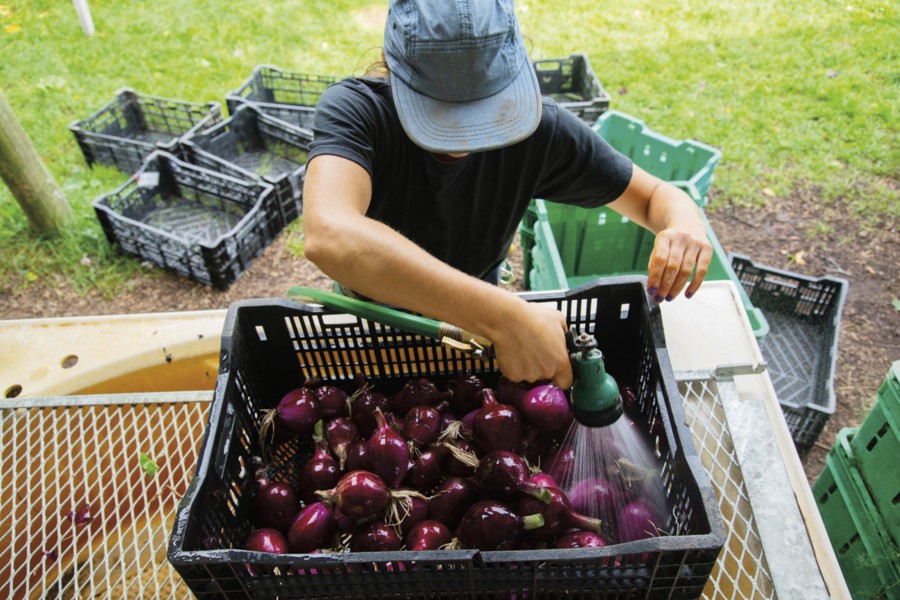Understanding Cross-Contamination in Produce Operations
Cross-contamination happens when bacteria that can cause sickness is transferred from one surface to another or from an individual to an object, potentially resulting in foodborne illnesses. The spread of harmful microorganisms or chemicals used in processing can put people in danger, and so, avoiding cross-contamination is one step in eradicating foodborne illnesses.
Produce can become contaminated by bacteria and virus microorganisms during harvesting, packing and storage handling. Cross-contamination can occur when affected produce touches other produce; when microorganisms from people touch farm produce; and when affected farm equipment touches produce.
Produce to Produce

Produce can become contaminated by germs from other produce. This type of cross-contamination is particularly harmful if raw meat comes into contact with fresh produce. Here are some instances of produce-to-produce cross-contamination:
- In a walk-in cooler, meat drippings from raw meat stored on a top shelf might drip onto produce placed on a lower shelf.
- Raw chicken is packed with produce in the same box in the cooler.
- Unwashed produce coming from the field is packed with washed produce in the same box.
Persons to Produce
Persons can be a source of cross-contamination. Some examples are:
- When a farm worker handles fruits and vegetables after using the toilet and not properly washing hands.
- When an employee touches raw meat and then packs vegetables without washing hands between tasks.
- If an employee wipes his or her hands on an apron after touching raw meat without washing hands with soap and warm water before packing produce, or uses an apron to wipe food-contact surfaces.
Equipment to Produce
Harvesting equipment, such as pruners or knives, can contaminate produce when the equipment is not properly washed and sanitized between each use. Some examples include:
- Using dirty equipment to cut vegetables.
- Using the same knife to cut different foods, such as cutting raw chicken followed by lettuces and cabbages.
Cross-Contamination Prevention
Take the following steps to help prevent cross-contamination and reduce hazards to produce:
- Educate all employees and management on cross-contamination issues. This is the first step in its prevention!
- Wash your hands thoroughly with soap and clean, warm water between working with different types of foods or after using the toilet.
- Wash and sanitize all equipment and utensils that come in contact with food.
- Never wipe face, scratch skin or touch hair when handling produce.
- In the packing house/walk-in cooler, store produce appropriately by separating washed from unwashed produce.
- Wash all food-contact surfaces with clean water and soap, and sanitize between each task.
- Remove all jewelry and rings when working with produce. Jewelry can hide bacteria or fall into the produce.
- Employees must read, and follow the instructions on all product labels used for cleaning and sanitizing.


